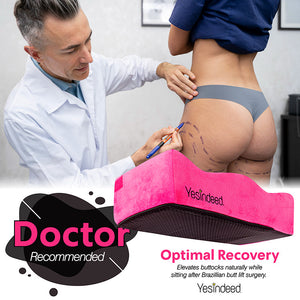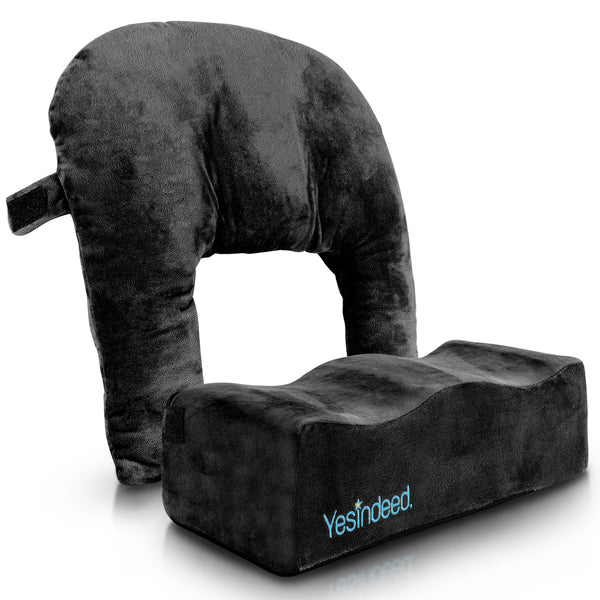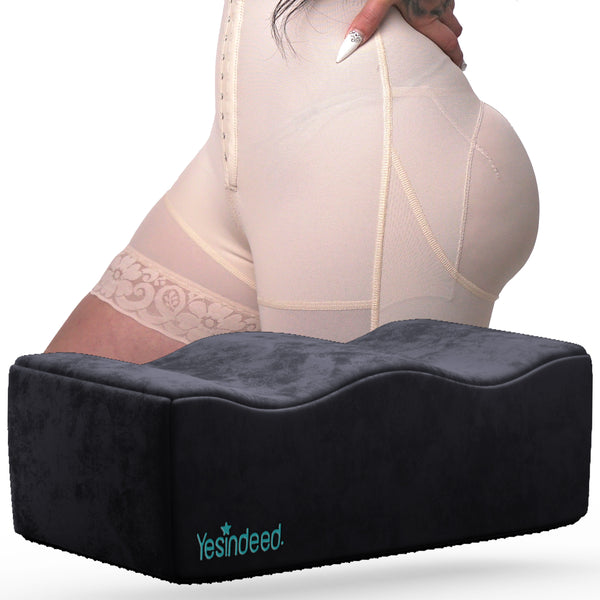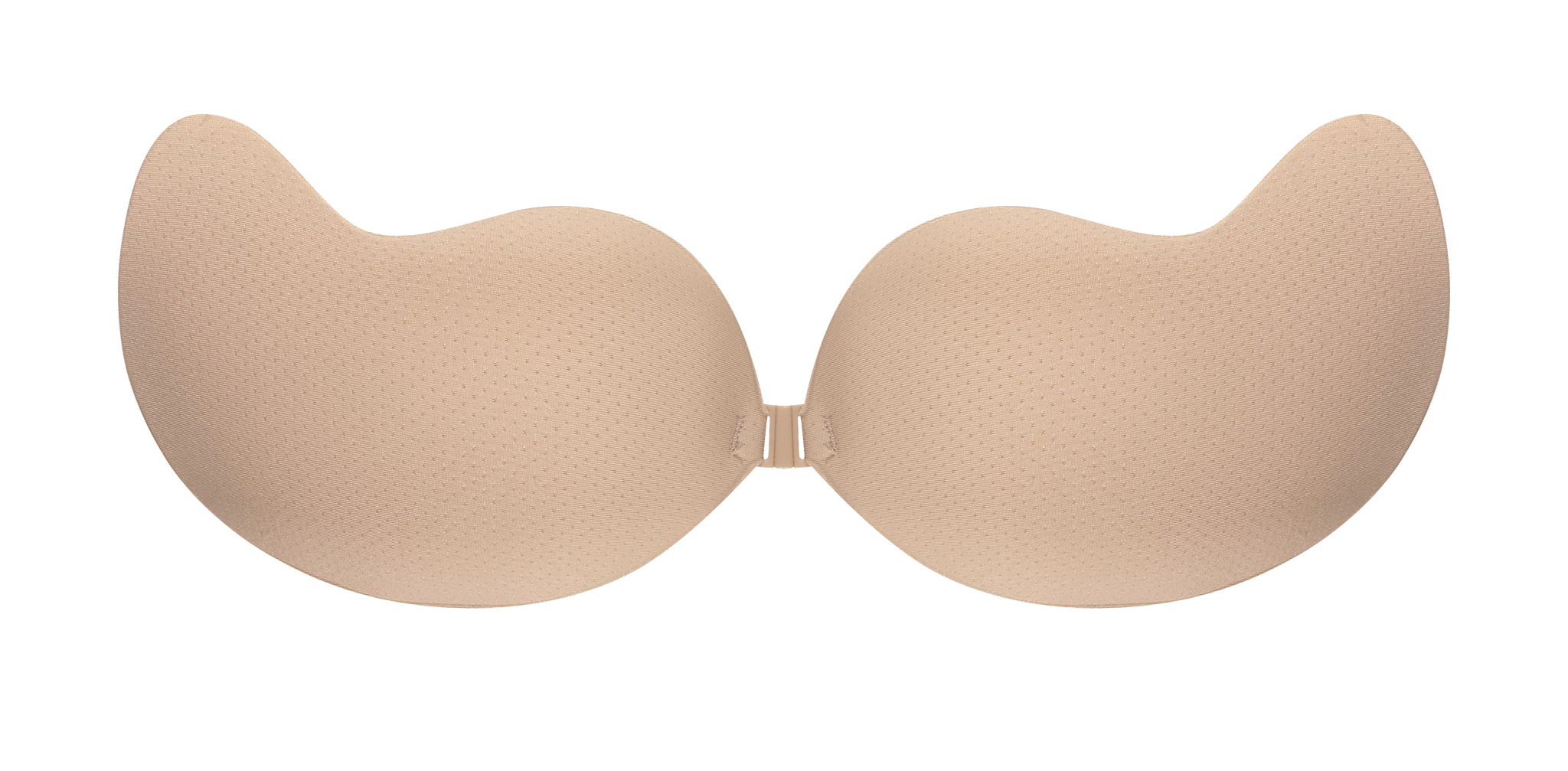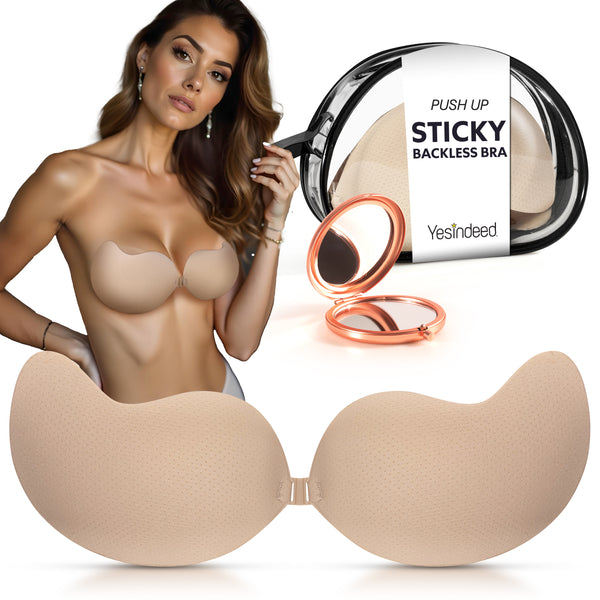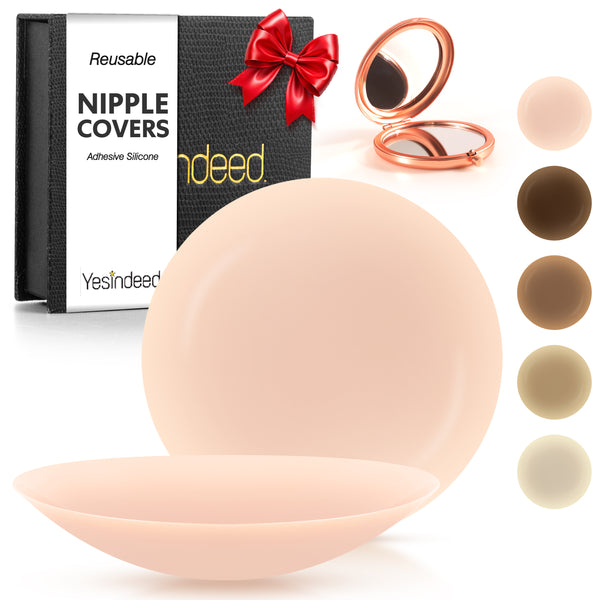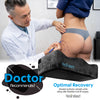Unleashed confidence is just a read away as we dive into the defining guide on thigh liposuction, a popular cosmetic procedure that could be your first step towards slimmer legs and a brand new you. Ever found yourself resigned to hiding under long clothes, uncomfortable with the thought of showing off your legs? Or perhaps you've been keeping up with regular exercise, but those stubborn fat deposits simply refuse to budge. Thigh liposuction might just be the game-changer you need. Delve in as we cover everything from pre-procedure preparations to post-surgery expectations, demystifying this transformative journey toward leaner, sculpted legs. Let's step into a world where insecurities are shed along with unwanted fat, and empowerment takes center stage.
Thigh liposuction is a surgical procedure that removes excess fat from the thighs to achieve a slimmer and more contoured appearance. While it can be an effective way to target stubborn fat deposits, there are also potential risks such as uneven results, loose skin, and prolonged recovery time. It's important to consult with a board-certified plastic surgeon to determine if thigh liposuction is right for you and to discuss any potential risks or complications.
Understanding Thigh Liposuction And Its Techniques

If you're considering thigh liposuction to achieve slimmer and more contoured legs, it's crucial to understand the procedure and its techniques. Thigh liposuction is a cosmetic surgery that aims to remove excess fat deposits from the thighs, resulting in a more proportionate and defined leg shape. This procedure can be highly effective for individuals who struggle with stubborn fat pockets in the thigh area that are resistant to diet and exercise.
To begin, let's discuss the two primary techniques used in thigh liposuction:
- Tumescent Liposuction: This technique involves infusing a solution of saline (saltwater), lidocaine (a local anesthetic), and epinephrine (a medication that constricts blood vessels) into the targeted areas. The solution helps numb the area, reduce bleeding, and make it easier to suction out fat cells.
- Ultrasound-Assisted Liposuction (UAL): In this technique, ultrasound energy is used to liquefy the fat cells before they are removed. This allows for a gentler extraction of fat and can be particularly beneficial for fibrous or denser fat deposits in the thighs.
It's important to note that your surgeon will evaluate various factors, such as your unique anatomy, skin elasticity, and overall health, before determining the most suitable technique for your specific case.
Now that we have a better understanding of thigh liposuction itself, let's explore the different types of traditional and advanced liposuction procedures commonly employed in this area.
Traditional and Advanced Liposuction Procedures
When it comes to achieving desired results through thigh liposuction, several traditional and advanced procedures can be utilized. These techniques aim to safely remove excess fat while minimizing discomfort, scarring, and recovery time.
One commonly used traditional method is Suction-Assisted Liposuction (SAL), which involves the use of a hollow cannula to manually suction out fat from the targeted areas. This technique has been refined over the years, utilizing smaller incisions and more advanced tools for improved precision and reduced trauma.
Imagine undergoing SAL for your thigh liposuction. The surgeon would make tiny incisions in inconspicuous areas, insert the cannula beneath the skin, and carefully maneuver it to break up and remove unwanted fat cells. This method allows for precise contouring of the thighs to create a smoother and more appealing leg shape.
On the other hand, advanced techniques such as Power-Assisted Liposuction (PAL) and Laser-Assisted Liposuction (LAL) have gained popularity due to their enhanced precision and faster recovery times.
PAL employs a mechanized cannula that vibrates or rotates, facilitating easier removal of fat cells with less physical effort from the surgeon. This reduces fatigue during longer procedures, making it an attractive option for both patients and surgeons.
LAL utilizes laser technology to liquefy fat cells before extraction, minimizing trauma to surrounding tissues. The heat generated by the laser can also stimulate collagen production, leading to potential skin tightening effects on the treated area.
These are just a few examples of the traditional and advanced liposuction procedures available for thigh sculpting. It's important to consult with a qualified plastic surgeon who can assess your individual needs and recommend the most suitable approach based on factors such as your desired outcome, body type, and existing cellulite or loose skin.
Having covered various techniques used in thigh liposuction, we'll now shift our focus to exploring the benefits and aesthetic outcomes that this procedure can offer.
- According to the American Society for Aesthetic Plastic Surgery, thigh liposuction was among the top five most performed cosmetic surgical procedures in 2022.
- Data compiled by medical experts indicates that thigh liposuction usually results in the removal of up to 50% of fat in targeted areas to prevent irregularities or dimpled appearance.
- Post-operative studies show that final results may not be visible until at least six months after the surgery, with some patients reporting variances including somewhat uneven thighs and loose skin.
Benefits And Aesthetic Outcomes Of Thigh Liposuction
Thigh liposuction has gained popularity as a cosmetic procedure that helps individuals achieve slimmer and more sculpted legs. While the main goal of thigh liposuction is to remove excess fat deposits, there are several aesthetic benefits that can be attained through this procedure.
One of the primary benefits of thigh liposuction is the improvement in body contour and proportion. Stubborn fat pockets in the thighs can often be resistant to diet and exercise, making it challenging to achieve the desired shape. However, with liposuction, targeted removal of excess fat cells can result in a more balanced and harmonious appearance, enhancing the overall silhouette.
Furthermore, thigh liposuction can create a smoother and more aesthetically pleasing leg contour. By reducing the bulges and irregularities caused by localized fat deposits, this procedure can bring about a sleeker appearance. Whether it's eliminating saddlebags on the outer thighs or addressing excess fat on the inner thighs, liposuction allows for precise sculpting to achieve a natural-looking outcome.
Beyond the physical changes, thigh liposuction can also have a positive impact on an individual's self-confidence and body image. Many people struggle with insecurities related to their thighs, feeling self-conscious about wearing certain outfits or participating in activities that expose their legs. Through liposuction, individuals can regain their confidence and feel more comfortable in their own skin, ultimately leading to improved self-esteem.
For instance, imagine a woman who has always felt self-conscious about wearing shorts or skirts due to excess fat on her inner thighs. After undergoing thigh liposuction and seeing a significant reduction in that area, she no longer hesitates to wear outfits that showcase her legs. This newfound confidence not only improves her physical appearance but also positively impacts her mental well-being and overall quality of life.
Now that we understand the benefits of thigh liposuction, let's explore how this procedure can help in sculpting thighs and achieving a natural shape.
- Thigh liposuction is an increasingly popular cosmetic procedure that can help individuals achieve slimmer and more sculpted legs. The procedure not only removes excess fat but also results in aesthetic benefits such as improvement in body contour and proportion, a smoother leg contour, and increased self-confidence. Liposuction allows for precise sculpting to achieve a natural-looking outcome and can positively impact an individual's mental well-being, leading to an improved quality of life.
Sculpting Thighs And Natural Shape
Thigh liposuction is a highly customizable procedure that allows for the precise sculpting of the thighs to achieve a more desired shape. This technique involves removing excess fat cells from specific areas of the thighs, such as the inner thighs, outer thighs, or both, to create a smoother and proportionate contour.
Think of thigh liposuction as an artist's brushstroke, carefully shaping and refining the canvas to create a masterpiece. Just as an artist pays attention to every detail, a skilled surgeon considers factors such as the patient's body proportions, natural curves, and overall aesthetic goals when determining how much fat to remove and which areas to target.
By selectively removing fat deposits, thigh liposuction can enhance the natural shape of the legs. For instance, it can help define the appearance of muscle tone in individuals with underlying muscle definition but struggle with stubborn fat covering those muscles.
Additionally, thigh liposuction can restore balance and symmetry to uneven thighs, addressing concerns about asymmetry caused by variations in fat distribution. The precision offered by liposuction techniques allows surgeons to sculpt each thigh accordingly and create a more harmonious overall result.
It's important to note that while thigh liposuction can improve the appearance of the legs through fat removal and contouring, it is not designed to reduce cellulite or address issues like stretch marks. However, combining liposuction with laser treatments that improve collagen formation in the skin may further enhance overall skin texture and tone.
While there are numerous benefits and aesthetic outcomes associated with thigh liposuction, it's crucial to acknowledge that every individual's experience may vary. In the next section, we will delve into some potential risks and varied results that one should consider.
Potential Risks And Varied Results Of Thigh Liposuction

Thigh liposuction can be a transformative procedure for those seeking to achieve slimmer and more contoured legs. However, like any surgical intervention, it is important to acknowledge the potential risks and varied results that may arise. Before undergoing thigh liposuction, patients must have a thorough understanding of these factors and engage in open discussions with their plastic surgeon.
One of the primary risks associated with thigh liposuction is anesthesia complications. While anesthesia is generally safe, there is always a possibility of adverse reactions or side effects. It is crucial for patients to disclose their medical history, allergies, and any medications they are taking to their surgeon, as this information can impact the choice of anesthesia and minimize associated risks.
Another common concern is the potential for bruising following the procedure. Due to the nature of liposuction, which involves removing stubborn fat deposits through small incisions, some degree of bruising should be expected. However, the severity and duration of bruising can vary among individuals based on factors such as skin sensitivity and adherence to post-operative care instructions.
The use of specialized instruments called cannulas during liposuction carries a slight risk of breakage. However, skilled plastic surgeons take precautions to minimize this possibility by using high-quality cannulas and employing precise techniques during the procedure. It is crucial for patients to choose a qualified surgeon with extensive experience in liposuction to ensure their safety.
Changes in skin sensation are also a potential outcome of thigh liposuction. Some patients may experience temporary numbness or decreased sensitivity in the treated areas due to nerve manipulation during the procedure. However, these changes typically resolve gradually over time as nerves heal.
Deep vein thrombosis (DVT) and cardiac/pulmonary complications are rare but serious risks associated with any surgical procedure, including thigh liposuction. However, plastic surgeons take several precautions to minimize the likelihood of these complications, such as encouraging early ambulation and prescribing blood thinners when necessary.
It is important to note that every individual's body responds differently to surgical interventions, which means results can vary. While many patients achieve their desired outcome of slimmer thighs and improved leg contours, others may experience asymmetries or irregularities in the treated areas. It is crucial for patients to align their expectations with their surgeon during the consultation process and discuss potential limitations and risks beforehand.
When considering thigh liposuction, patients must weigh the benefits against the risks and potential complications. Thorough understanding and informed consent are essential, which is why consent forms are required to ensure patients comprehend the procedure and associated risks fully. It is always recommended that patients directly address all questions and concerns with their plastic surgeon to make an educated decision about their cosmetic goals.
Procedure Risks And Complications
In addition to the general risks mentioned above, there are specific risks and complications regarding the thigh liposuction procedure itself. These risks are vital for patients to be aware of before undergoing surgery.
One potential complication is fluid accumulation. Following thigh liposuction, fluid may accumulate in the treated area, causing swelling and discomfort. To address this issue, surgeons typically insert drains or recommend compression garments to minimize fluid buildup. Patients must strictly adhere to these post-operative instructions to mitigate potential complications.
Another risk is the possibility of developing an infection at the incision sites. To minimize this risk, surgeons administer antibiotics during the procedure and provide detailed aftercare instructions for wound care. Patients should diligently follow these guidelines regarding keeping the incisions clean and watching for signs of infection, such as increased redness, warmth, or discharge.
Irregular contours or asymmetries can sometimes occur following thigh liposuction. These issues may arise due to varying amounts of fat removal or uneven healing between the treated areas. While skilled plastic surgeons strive for optimal symmetry, there is always the possibility of subtle differences. In such cases, revision surgery might be necessary to achieve the desired results.
Poor wound healing is another potential complication. Patients with underlying health conditions such as diabetes or a compromised immune system may have increased risks of delayed wound healing. It is crucial for individuals with these conditions to inform their plastic surgeon before undergoing the procedure.
While advancements in liposuction techniques have reduced the occurrences, there is a slight possibility of developing rippling or loose skin after thigh liposuction. This risk is more prevalent in individuals with poor skin elasticity or those requiring large amounts of fat removal.
Ultimately, understanding the potential risks and complications associated with thigh liposuction empowers patients to make informed decisions about their cosmetic journey. Thorough consultations with experienced plastic surgeons and open discussions about individual concerns and goals are vital in ensuring the best possible outcome while minimizing potential risks.
Post-Thigh Liposuction Recovery And Lifestyle
After undergoing thigh liposuction, a crucial aspect of the journey is the recovery period and making necessary adjustments to your lifestyle. It's essential to have a clear understanding of what to expect during this phase to ensure a smooth and successful recovery.
Thigh liposuction is a popular cosmetic procedure for slimming the thighs. It involves removing unwanted fat in the thigh area that is unresponsive to exercise and diet. While recovery time can vary depending on factors such as the amount of fat removed and treatment site, generally, it can last between 7 to 14 days. If you undergo liposuction on both inner and outer thighs, the recovery period may extend to 3 to 4 weeks.
Imagine you've just had thigh liposuction done because you wanted to get rid of stubborn fat in your thighs that exercise alone couldn't eliminate. Now, as you embark on your recovery journey, you need to be prepared for what lies ahead.
During the initial days after surgery, it's common to experience side effects such as soreness, redness, and slight bruising in the treated area. These are normal responses to the procedure and should gradually subside with time. However, if bruising persists for more than three to five days or if you have any concerns, it's crucial to contact your surgeon for guidance.
Walking plays an essential role in post-thigh liposuction recovery. Contrary to popular belief, resting continuously isn't recommended as it can impede blood flow and slow down healing. Instead, gentle walking is encouraged during the recovery period. Not only does walking help with blood circulation but it also aids in reducing swelling and preventing blood clots.
Now that we understand the importance of walking during recovery let's explore the specific walking and recovery procedures one needs to follow.
Walking And Recovery Procedures
Following thigh liposuction, your surgeon will provide detailed instructions on how much walking is suitable for your individual recovery. It's important to follow their guidance as it can vary depending on the extent of the procedure and your body's healing process.
In the initial days after surgery, you may need assistance, such as using crutches or a walker, to support your movements. As you progress in your recovery, you'll gradually transition to walking without assistance. Keep in mind that it's crucial to listen to your body and not push yourself beyond what feels comfortable.
Let's imagine you're recovering from thigh liposuction and have reached a point where you no longer require crutches or a walker. Your surgeon has advised you to start incorporating walking into your daily routine. You decide to begin with short walks around your home or neighborhood.
Start by taking slow, measured steps, being mindful of any discomfort or pain. Initially, aim for shorter distances and then gradually increase your distance as your stamina improves. Remember to wear comfortable shoes and clothing that allow for ease of movement.
Additionally, maintaining a healthy lifestyle during recovery can contribute significantly to the healing process. This includes eating a balanced diet rich in nutrients, staying hydrated, and getting enough rest. Avoiding excessive physical activity or strenuous exercise is crucial during the recovery period to prevent any complications.
|
Walking And Recovery Procedures |
|
- Follow your surgeon's guidance on how much walking is suitable for your recovery |
|
- Begin with short walks and gradually increase distance |
|
- Listen to your body and avoid pushing yourself too hard |
|
- Wear comfortable shoes and clothing for ease of movement |
|
- Maintain a healthy lifestyle with proper nutrition, hydration, and adequate rest |
By following these walking and recovery procedures while incorporating them into a healthy lifestyle, you can optimize your post-thigh liposuction recovery process.
Frequently Asked Questions
AreThe Results Of Thigh Liposuction Permanent?
The fat cells removed during liposuction do not grow back. However, remaining fat cells can enlarge with weight gain. Therefore, maintaining a stable weight through diet and exercise is essential for lasting results.
What Are The Risks Associated With Thigh Liposuction?
As with any surgical procedure, there are risks such as infection, bleeding, scarring, and uneven contours. There can also be complications related to anesthesia. Choosing a qualified plastic surgeon can minimize these risks.
What Is The Recovery Time After Thigh Liposuction?
Recovery times can vary, but most patients can return to work within a few days to two weeks after the procedure. Swelling and bruising may last for several weeks, and full recovery can take several months. Compression garments are typically worn for a few weeks post-surgery to aid in the healing process.









